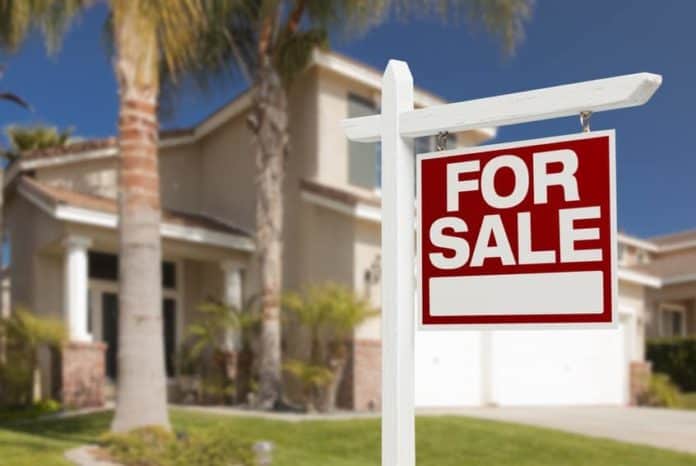A new report by Filterbuy, looking at the U.S. metropolitan areas with the largest increases in homeownership over the past 10 years, says Orlando actually experienced a decrease– from 70.8% in 2010 to 64.2% in 2020.
Nationwide, homeownership took a serious hit after the collapse of the housing market in 2008, and the onset of the Great Recession. It took seven years for the market to begin to recover and after 2015, the slow upward trend saw an especially sharp spike from 2019 to 2020. In that year, the homeownership rate rose two percentage points, from 64.6% to 66.6%, with the raw number of owner-occupied units rising by 4.6 million to 83.8 million.
The report examines the 10-year percentage point change in homeownership at the national level and looks at median home values and the breakdown of homeownership rates by race and ethnicity and age.
And in 2020, COVID-19 appeared on the scene and changed everything. The pandemic created an opportunity for some people to make astounding amounts of money. Housing provided one such opportunity.
First, low-income earners were hit extremely hard. They were more likely to lose their jobs or have hours on the job cut back. They were forced to rely more on government stimulus measures like direct payments, expanded unemployment benefits, eviction moratoriums, and mortgage forbearance programs to keep their housing situations intact.
Meanwhile, middle and upper income earners benefitted from the economics of recession: low interest rates, strong savings and market returns. Widespread work-from-home policies also gave them time to explore the housing market and seek out new homes– and it was their interest in buying homes that led to sky-high demand for residential real estate. Homes began being snatched off the market for record prices.
Recent data from the U.S. Census Bureau shows just how fast homeownership has risen during the pandemic. Because they are the largest population group in the U.S., millennials (currently aged 25 to 40) are poised to become a major force in the real estate market. But for those 34 and under, only around 40% owned a home in 2020, compared to 62.7% of adults aged 35 to 44. According to the Filterbuy report, every other age group has homeownership rates of more than 70%.
But not everyone has benefitted. Increased demand is almost always accompanied by increased prices as the market moves to cope with limits on housing supply. Lower-earning households generally find themselves unable to compete. This economic fact has historically kept these households from fully achieving the American dream.
While younger Americans also own homes at lower rates than other segments of the population, racial and ethnic disparity bears its own share of blame. While the homeownership rate for non-Hispanic whites is 75%, only 45.3% of Blacks own homes. The rate for Asian Americans is 60.3%; for Native Americans, its 54.2%; and for Hispanics/Latinos it’s 50.1%. And while some racial and ethnic minorities have increased their homeownership in recent years, for Blacks, there was actually a slight decline from 2010 to 2020.
Changes in homeownership rates are also factors of the well-known trope, “Location, location, location.” Lakefront homes are generally more sought after than homes in the “inner city.” To determine the metropolitan areas with the largest increase in homeownership over the past ten years, researchers at Filterbuy calculated the percentage point change in the homeownership rate between 2010 and 2020 using data from the Census Bureau. Researchers also included home price data from Zillow. Only the 70 largest U.S. metropolitan areas with available data from Census were considered in the analysis. This is in part related to an area’s demographic makeup, but economic factors like income levels, housing values, and supply in each market were also consiered.
Between 2010 and 2020, a total of 22 states saw an increase in homeownership rates, led by Maine, Delaware, and Maryland, which each saw increases above 3 percentage points. Among states that saw a decline in homeownership rates, Connecticut led with a drop of 3.9 percentage points over the last decade.
The analysis found that in 2010, the homeownership rate in the Orlando metro area was 70.8%. Ten years later, that figure fell sharply to 64.2%. Here is a summary of the data for the Orlando-Kissimmee-Sanford, FL metro area:
• 10-year percentage point change in homeownership: -6.6
• Homeownership rate (2020): 64.2%
• Homeownership rate (2010): 70.8%
• Median home price: $314,117
Here are the statistics for the entire United States:
• 10-year percentage point change in homeownership: -0.3
• Homeownership rate (2020): 66.6%
• Homeownership rate (2010): 66.9%
• Median home price: $303,288
For more information, and complete results, see the original report on Filterbuy’s website: https://filterbuy.com/resources/cities-with-home-ownership-increase/


